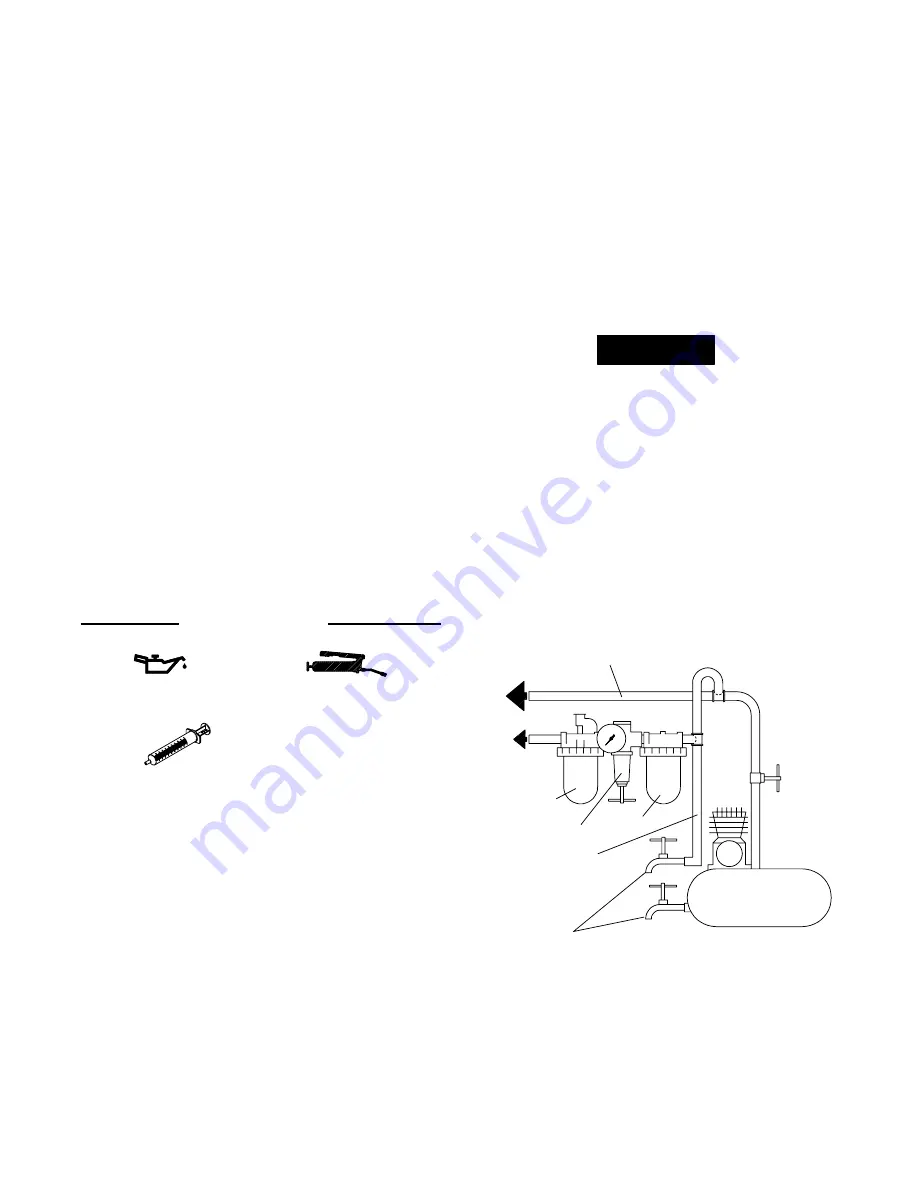
12
AJUSTES
7. Submerja o mecanismo num recipiente que contenha
fluido para mecanismo e, com uma chave, rode o Eixo de
Accionamento para a direita e para a esquerda para purgar
qualquer ar restante no sistema.
8. Retire o mecanismo do fluido e rode o Parafuso de
Ajuste para a direita até ele parar.
9. Aparafuse o Bujão do Óleo com o Vedante do Bujão
do Óleo e o Suporte do Vedante no mecanismo até
ficar seguro.
10. Seque o lado de fora do mecanismo, limpe e retire o
Bujão da Câmara de Óleo. Com a seringa, retire 0,9 cc
de fluido dos modelos 1100PS4 e 1,5 cc dos modelos
1900PS4.
11. Instale o Bujão da Câmara de Óleo e aperte–o com um
valor de binário entre 2,3 e 2,8 Nm.
12. Posicione uma nova Junta da Caixa do Martelo sobre a
Carcaça do Motor e instale o mecanismo montado
sobre o veio do rotor.
13. Coloque a Tampa da Caixa do Martelo sobre o Veio de
Accionamento contra a Carcaça e a Junta. Instale os
três Parafusos Allen da Caixa do Martelo e as
Contraporcas. Aperte cada parafuso com um valor de
binário entre 5,1 e 5,6 Nm.
14. Teste a ferramenta quanto ao binário nos ajustes
máximo, mínimo e médio de binário. Se a ferramenta
não funcionar satisfatoriamente, repita o processo de
enchimento e preste atenção especial à rehoção do ar
indesejado do sistema de fluido. Consulte a secção
AJUSTE DE BINÁRIO para o procedimento
específico de ajuste.
15. Se o binário for satisfatório, mas a ferramenta não
desligar, só então será necessário ajustar o mecanismo
de desligamento. Se isto for necessário, proceda como
segue:
a. Retire o Bujão do Orifício de Ajuste da Caixa
do Martelo.
b. Com uma ferramenta pontiaguda, remova a tinta
da abertura da chave no Parafuso de Ajuste que está
a 180º do Parafuso de Ajuste de Binário.
c. Rode o Parafuso para a direita, no máximo 10 graus.
AVISO
Antes de operar a ferramenta, marque o
Parafuso de Ajuste de desligamento com uma
caneta de tinta permanente ou com tinta, de
forma a poder ser distinguido para ajustes
futuros.
d. Marque permanentemente o Parafuso para
identificação futura e então volte a testar a
ferramenta. Os ajustes ao mecanismo de
desligamento só devem ser feitos em incrementos
de cinco a dez graus.
COLOCANDO A FERRAMENTA EM FUNCIONAMENTO
LUBRIFICAÇÃO
Ingersoll–Rand No. 50
Ingersoll–Rand No. 67
Fluído Ingersoll–Rand
Número de Pedido
EQ106S–400–1
Use sempre um lubrificador de ar de linha com estas
ferramentas. Nós recomendamos a seguinte Unidade
Filtro–Lubrificador–Regulador:
E.U.A. – No. C18–03–FKG0–28
Depois de cada 20 000 ciclos, ou como a experiência
indicar, drene e encha o Conjunto do Comando da Unidade
de Impulso como instruído neste manual usando o Kit de
Reposição de Fluido (Número de Pedido EQ106S–K400).
Lubrifique o comando hexagonal e o eixo de saída antes de
montar.
LINHAS PRINCIPAIS 3 VEZES O TAMANHO DA
ENTRADA DA FERRAMENTA PNEUMÁTICA
PARA
SISTEMA DE AR
PARA
FERRAMENTA
PNEUMÁTICA
LUBRIFICADOR
REGULADOR
FILTRO
LINHA RAMIFICADA
2 VEZES O TAMANHO
DA ENTRADA DA
FERRAMENTA
PNEUMÁTICA
DRENE
REGULARMENTE
COMPRESSOR
(Desenho TPD905–1)
Summary of Contents for 1100PS4 Series
Page 13: ...MAINTENANCE SECTION 13 Dwg TPA1480 ...
Page 22: ...22 NOTES ...
Page 23: ...23 NOTES ...









































